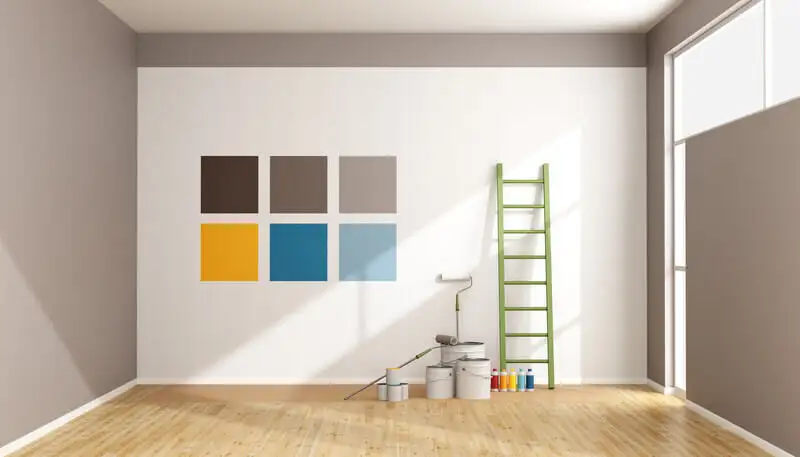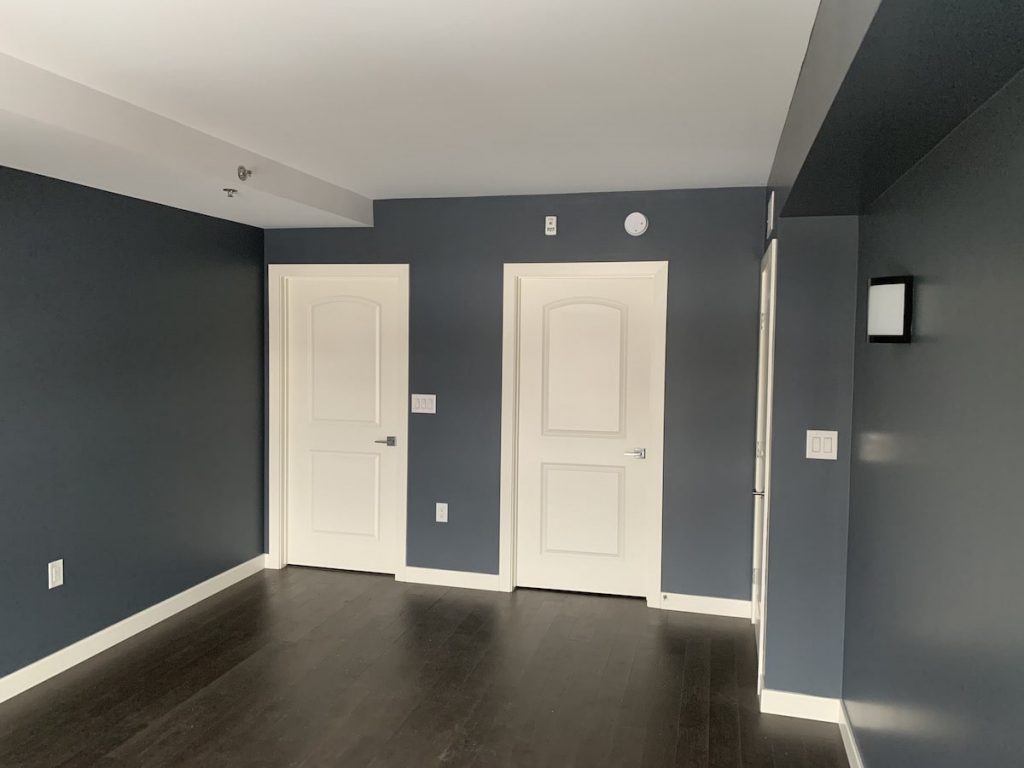Enhance Your Interior Design With Comprehensive Shade Assessment
The assimilation of color examination into indoor layout provides a special possibility to fine-tune and boost the psychological and visual resonance of an area. By involving with an experienced shade expert, you can browse the intricacies of color option, ensuring that your choices not only complement building functions but additionally reverberate with personal design and emotional effect.
Advantages of Shade Assessment

Furthermore, color assessment aids in making the most of all-natural light and enhancing spatial perception. Lighter shades can make a room appear even more expansive, while darker tones create an intimate setup. Cleveland Metro Painting Specialists. This strategic application of color can significantly affect the overall atmosphere of any type of indoor area
Furthermore, professional specialists have an extensive understanding of current trends and timeless standards, making certain that the selected colors will stay attractive gradually. This foresight can conserve clients from expensive redesigns in the future. Color consultation encourages customers by providing them with a clear vision and direction, promoting self-confidence in their design options and inevitably leading to a more enjoyable and successful indoor design end result.
Recognizing Shade Psychology
The importance of shade psychology in indoor design can not be overemphasized, as it looks into the psychological and psychological impacts that various hues can stimulate in people. Colors can influence mood, actions, and even performance, making them a critical consideration in any design project.
For example, cozy shades such as red, orange, and yellow are typically connected with power and warmth. They can boost feelings of exhilaration and comfort, making them ideal for social spaces like living cooking areas or rooms. On the other hand, cool shades like blue, green, and purple have a tendency to stimulate calmness and harmony, making them optimal for bedrooms or meditation locations.
Furthermore, making use of neutral tones can develop a balanced atmosphere by permitting the bolder colors to attract attention without overwhelming the detects. Understanding these emotional impacts makes it possible for designers to develop areas that not just look aesthetically pleasing yet also promote psychological health.
Incorporating shade psychology right into interior style includes a thoughtful option of hues tailored to the desired function of each area, ultimately improving the overall experience for its occupants. This understanding is important for achieving a harmonious and useful indoor atmosphere.
The Color Wheel Clarified
It comprises main shades-- red, blue, and yellow-- that can not be developed by mixing other shades. Tertiary shades result from mixing a primary and a second color, leading to hues such as green and red-orange.
The shade wheel helps designers grasp the connections between colors, consisting of complementary, similar, and triadic schemes. Corresponding colors, positioned contrary each other on the wheel, produce vivid contrasts that can stimulate a room.
Utilizing the shade wheel in indoor design not just boosts aesthetic allure but likewise stimulates specific emotions and atmospheres, making it an important referral for color examination. Understanding these connections inevitably empowers designers to develop spaces that are both aesthetically exciting and functional.
Choosing the Right Combination
A well-chosen shade system can link a room, boost its attributes, and stimulate preferred feelings. Different areas serve varied functions and require palettes that reflect their designated use; for circumstances, tranquil colors such as soft blues or greens work well in bedrooms, promoting relaxation.
Next, consider the natural light available. Light can considerably change exactly how colors show up, so it is vital to analyze the area at various times of the day. Furthermore, think about existing architectural elements and home furnishings. An unified combination must match these functions, creating a cohesive look throughout the space.
When picking colors, use the 60-30-10 Learn More guideline, which suggests that 60% of the area must be a dominant color, 30% a secondary color, and 10% an accent shade. This ratio guarantees equilibrium and visual rate of interest (Cleveland Metro Painting Specialists). Lastly, example colors on the wall surfaces before devoting, as this allows you to see just how the shades connect with each other and the total ambiance they produce in your interior style task.
Dealing With a Color Professional

When collaborating with a shade consultant, the process usually begins with a preliminary examination. Throughout Check This Out this conference, you'll review your vision, preferences, and the existing elements in your space. The specialist will certainly analyze your needs and may advise particular my response shade palettes that align with your goals.
After establishing a direction, the specialist will provide samples and aesthetic help to aid you envision the proposed color schemes. This step is important, as shades can show up in a different way under varying lighting conditions.
In addition, a color specialist can direct you in selecting complementary furnishings, art work, and devices to balance with your selected combination. By working together carefully, you can achieve a refined aesthetic that boosts your insides and develops a welcoming ambience. Inevitably, the proficiency of a color professional can dramatically improve the total effect of your design job.
Conclusion
In recap, extensive shade assessment works as a crucial tool for improving interior decoration. By leveraging expert understanding of color psychology and spatial dynamics, a customized color scheme can be developed to stimulate certain feelings and create an unified environment. This strategic method not only promotes a cohesive style narrative however likewise reduces the danger of costly redesigns. Eventually, involving with a color expert makes certain an informed and cosmetically pleasing end result, elevating the general experience of the room.
By involving with a skilled color specialist, you can browse the intricacies of shade selection, guaranteeing that your selections not only complement building attributes yet also resonate with personal style and emotional effect. It consists of main colors-- red, blue, and yellow-- that can not be developed by mixing various other colors.The shade wheel helps developers grasp the connections in between colors, consisting of complementary, comparable, and triadic systems.When picking shades, utilize the 60-30-10 policy, which recommends that 60% of the room should be a dominant color, 30% a secondary shade, and 10% an accent color. By leveraging expert knowledge of color psychology and spatial dynamics, a tailored color combination can be created to stimulate details feelings and create a harmonious atmosphere.